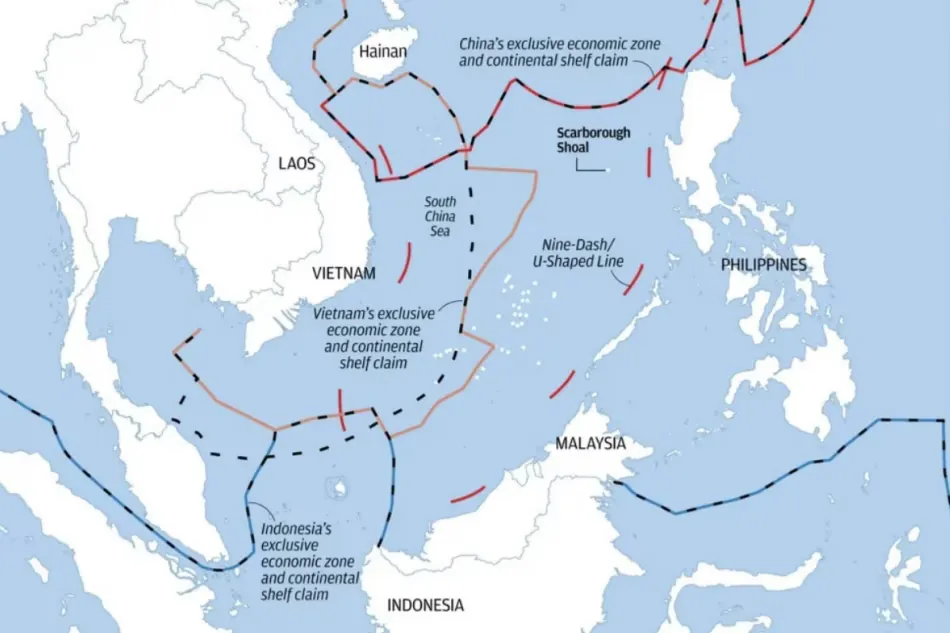 South China Sea and the 9-dash line. (Image: Center for Strategic and International Studies)
South China Sea and the 9-dash line. (Image: Center for Strategic and International Studies)
South China Sea (Part 1 of 2)
The only way to understand the South China Sea issue is to get a map of: 1. The oceans of the world, or 2. of the ASEAN Nations (Cambodia, Laos, Vietnam, Thailand, Indonesia, Malaysia, Philippines).
In the ASEAN map, find in front of Malaysia’s side of Borneo Island the words James Shoal. High or low tide, it is about 75 feet below the surface of the waters. China says this shoal is the southernmost of its territory. Draw a line beginning with James Shoal; to your left; the line passes through Bandar Seri, Malaysia, Cambodia, and Vietnam up to Hainan Island. To your right, from James Shoal, draw a line from Sabah, the tip of Borneo Island to Palawan up the left side of Batanes Islands. This line is U shaped. China claims everything inside the U line. This line is called the 9 dash line because it first appeared in 1930 China maps as a line broken into 9 parts forming a U shape image. Inside this line are exclusive economic zones claimed by the ASEAN Nations under the United Nations Convention of the Laws of the Seas (U.N.C.L.O.S.). This means China, Brunei, Indonesia, Philippines, Malaysia, and Vietnam can say they alone can fish in front of their shorelines. For the Philippines, it is in front of Batanes, Luzon, Palawan, and Sulu up to the tip of Borneo’s Kota Kinabalu. Brunei has billions of barrels of oil in their offshore waters and since the 1970s, has been raking billions of dollars yearly from sale of its oil. The other ASEAN states think there is also oil in their offshore waters. ASEAN was meant to foster free trade, cultural ties and peace in the region. This changed when in the 1990s China claimed the South China Sea. Since the 15th century and up to now, map makers described this area in Latin as “Mare Chine” South China Sea. When Deng Xiao Peng became Premier, he opened China to world trade in 1980, something all the Chinese emperors never did. China’s economy boomed for 6 Reasons.
- No minimum wage law
- No labor laws
- No strikes
- Low production costs (cheap electricity, water, transportation, very little government regulations, interference, red tape).
Since 1980, thousands of factories, businesses sprung up. Hundreds of millions of Chinese got jobs, the economy jumped. Today, 2023, the US and China have the world’s number one and two economies. China has the world’s biggest dollar reserves of 4 trillion dollars. Except for rare earth minerals China has very little iron ore, oil, gas, nickel, copper, rubber, chromite, coal all needed to be an industrial power. Today, 2023, most of the items sold worldwide from electronics, plastics, clothes, food, cars, trucks, appliances, bottles, chemicals, medicines etc. are China made or are made of parts/pieces from China.


No Comments